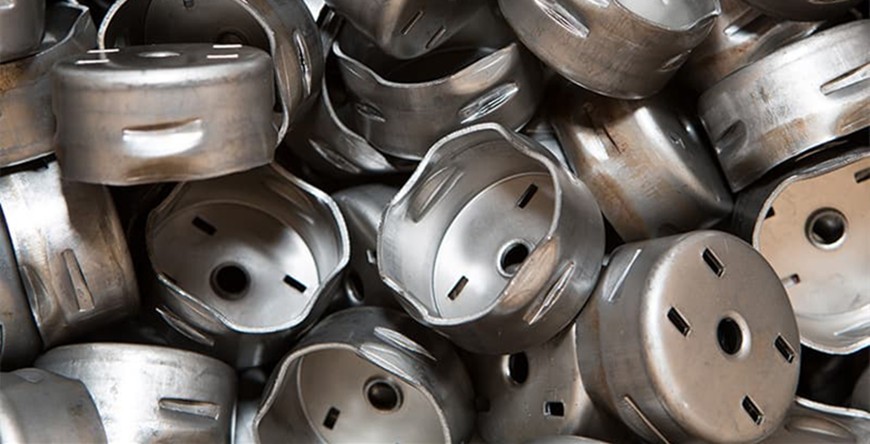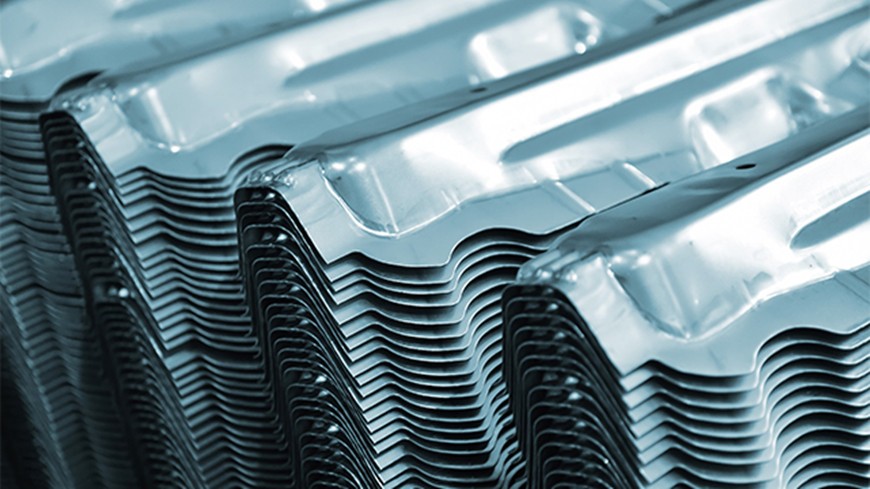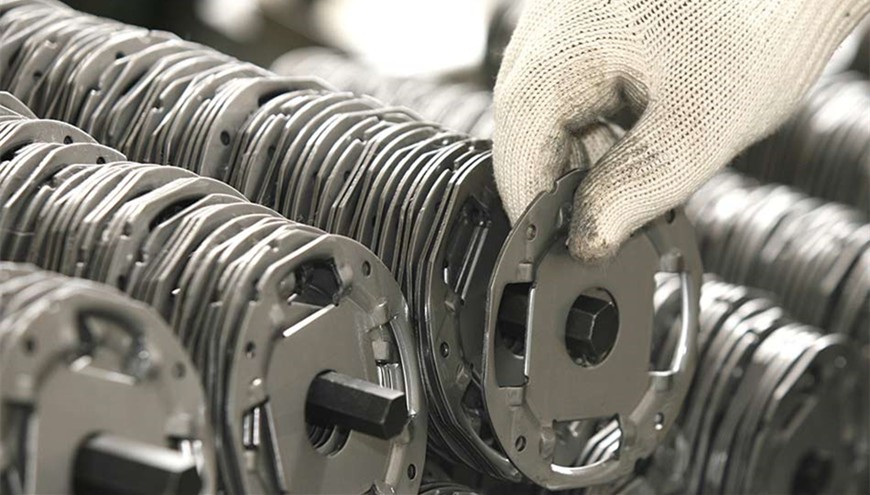Metal stamping is a manufacturing process in which coils or flat sheets of material are formed into specific shapes. Stamping encompasses multiple forming techniques such as blanking, punching, embossing, and progressive die stamping, to mention just a few. Parts use either a combination of these techniques or independently, depending on the piece’s complexity. In the process, blank coils or sheets get fed into a stamping press which uses tools and dies to form features and surfaces in the metal. Metal stamping is an excellent way to mass-produce various complex parts, from car door panels and gears to small electrical components used in phones and computers. Stamping processes are highly-adopted in automotive, industrial, lighting, medical, and other industries.
Papler Industry manufactures custom metal stampings in various materials, including copper, brass, stainless steel, and steel alloys. We offer production volumes up to over one million parts and maintain tight tolerances, all with competitive lead times. Please take advantage of our precision metal stamping services by starting an online quote at the top of this page.
OUR SERVICES
Our standard sheet metal stampings can make small, medium, and large parts. Papler Industry’s supplier network has a maximum press bed length of 10 feet and a maximum press bed width of 20 feet. We can readily stamp metal thicknesses from .025 - .188 inches but can go up to .25 inches thick and beyond, depending on the forming technique and material used.
Our project managers and experts personally review and manually quote each metal stamping project to ensure we meet your unique needs while providing a fast and easy manufacturing experience. Learn more about the process and our capabilities in the sections below.

Stamping is suitable for mass, complex part production. More specifically, it offers:
Metal stamping’s disadvantages are its setup costs and timelines. Production is quick and inexpensive after tool finalization. Its disadvantages include:

Papler Industry offers the following materials for both our standard and custom metal stampings:
Papler Industry can stamp other sheet metal materials on request, so feel free to contact our experts about the materials you need.
Our stamping materials can be post-processed with bead blasting, powder coating, chem film, anodizing, and plating in gold, silver, or electroless nickel. Learn more about our finishing options on our main sheet metal fabrication page.
We offer single and multistage, progressive die, deep draw, fourslide, and other stamping methods to ensure the most effective method for manufacturing your products. Papler Industry’s experts can match your project with the appropriate stamping by reviewing your uploaded 3D model and technical drawings.

Metal Stamping Production Volumes
Papler Industry offers a wide variety of production volumes for sheet metal stamping, including:
Low volume production is any amount up to 100,000 units. Most stamping projects are at least 1000 units to ensure cost-effectiveness for the customer. Customers use smaller metal stamping orders to bridge the development of a product between prototypes and mass manufacturing and to see how well a product will do on the market. Low volume production also helps if a buyer is looking for customized products. Papler Industry offers low per-unit costs, even for small volumes.
Medium volumes of production are between 100,000 and 1 million units. This amount of metal stamping production offers the flexibility of low-volume orders while enabling a lower price per part. It will also offer lower up-front costs for tooling.
High volume production includes orders of over 1 million parts. While metal stamping is very scalable, it’s an incredibly cost-effective manufacturing process for high volumes, as this drives down unit costs stemming from the price of creating custom tooling.
Short-run stamping is a low-volume production run with limited tool revisions. With short runs, overall costs will be less since you won’t need to change processes or equipment as much. Very short runs will have no changing factors, enabling the lowest price. These production capabilities are best for parts requiring less flexibility, low volume, or entering a new market.
Long-run stamping is a more involved production run in which all factors are variable, allowing for greater flexibility over time as the production line is tuned and optimized for scale. Long-run stamping will incur more costs as each process, material, or machine part may be changed and tested. However, these changes provide consistent quality, low per-unit costs, and incredible throughput of up to hundreds of parts a minute.
Our precision metal stamping services can deliver your part’s desired shape, whether you’re in the aerospace, automotive, telecommunications, or electronics industry. Our suppliers strive to meet your tolerance requirements by iterating on the tool and die design to fine-tune the output to meet your needs. However, the tighter the tolerances, the more challenging and costly this becomes. Precision metal stampings with tight tolerances can be brackets, clips, inserts, connectors, fittings, and other parts in consumer appliances, electrical grids, planes, and automobiles. They’re also used to create implants, surgical instruments, temperature probes, and other medical device parts like housings and pump components.
Regular checks to ensure the output still measures up to specifications are typical for all stamping after each successive run. Quality and consistency are part of a Total Productive Maintenance (TPM) program to detect wear in stamping tools (commonly made of D2 steel). Measurements with a check-fixture (or check-gauge) are standard for long-run stamping lines.